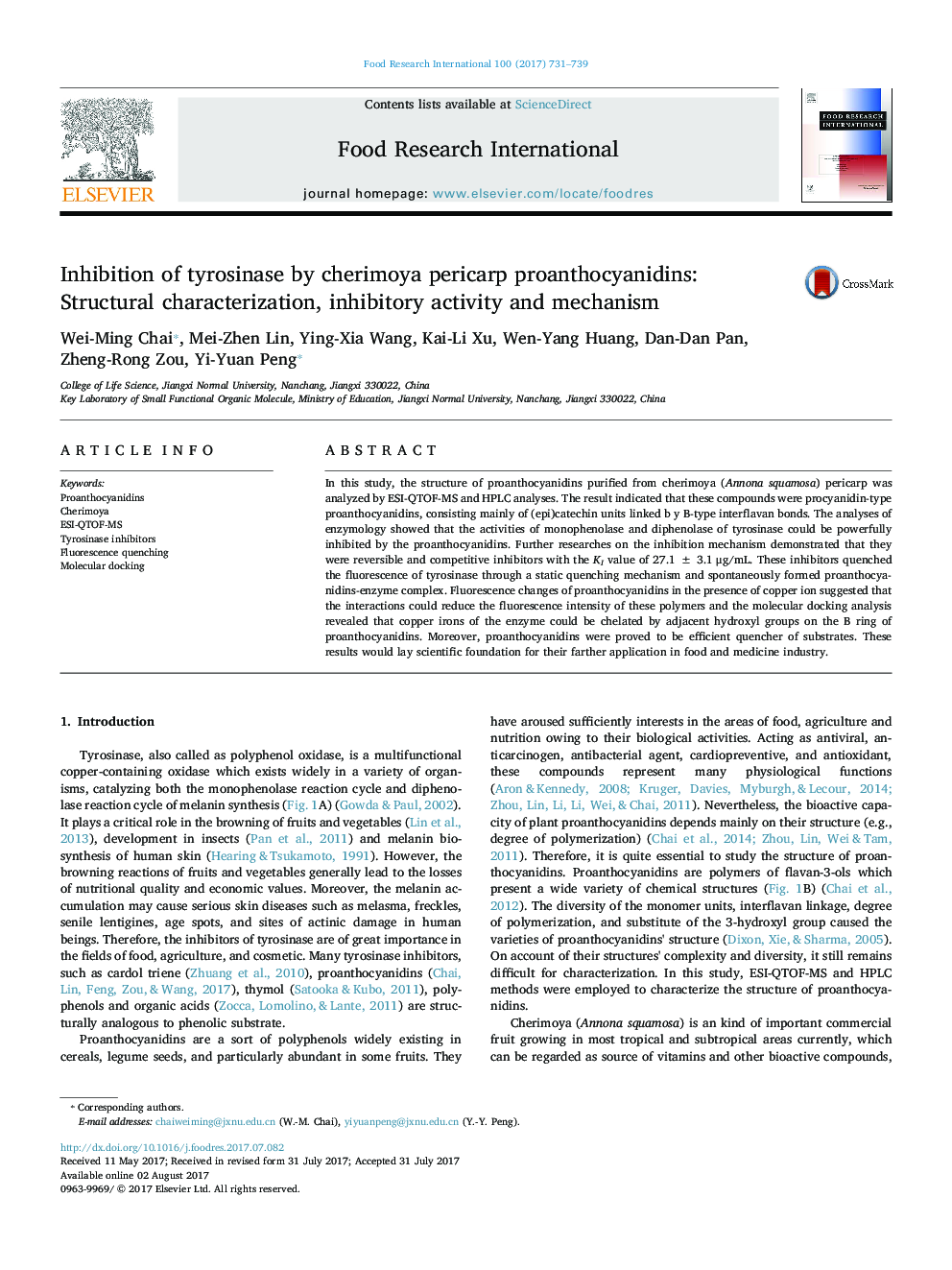| Article ID | Journal | Published Year | Pages | File Type |
|---|---|---|---|---|
| 5768028 | Food Research International | 2017 | 9 Pages |
â¢Enzyme inhibition kinetic analysis revealed its competitive inhibition type.â¢Structural similarity of B-type procyanidins and substrate leaded to inhibition.â¢Interactions of inhibitor with tyrosinase and substrates illustrated mechanism.
In this study, the structure of proanthocyanidins purified from cherimoya (Annona squamosa) pericarp was analyzed by ESI-QTOF-MS and HPLC analyses. The result indicated that these compounds were procyanidin-type proanthocyanidins, consisting mainly of (epi)catechin units linked b y B-type interflavan bonds. The analyses of enzymology showed that the activities of monophenolase and diphenolase of tyrosinase could be powerfully inhibited by the proanthocyanidins. Further researches on the inhibition mechanism demonstrated that they were reversible and competitive inhibitors with the KI value of 27.1 ± 3.1 μg/mL. These inhibitors quenched the fluorescence of tyrosinase through a static quenching mechanism and spontaneously formed proanthocyanidins-enzyme complex. Fluorescence changes of proanthocyanidins in the presence of copper ion suggested that the interactions could reduce the fluorescence intensity of these polymers and the molecular docking analysis revealed that copper irons of the enzyme could be chelated by adjacent hydroxyl groups on the B ring of proanthocyanidins. Moreover, proanthocyanidins were proved to be efficient quencher of substrates. These results would lay scientific foundation for their farther application in food and medicine industry.
Graphical abstractDownload high-res image (220KB)Download full-size image
